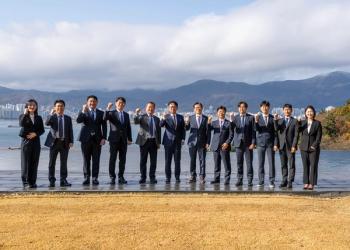
Concepts NREC to Develop Secondary Flow System for US Air Force
Concepts NREC will leverage its computer-aided engineering (CAE) turbomachinery design software as the basis for integrated cooling and critical secondary flow development.
AFWERX, a technology program of the U.S. Air Force, granted Concepts NREC a Direct-to-Phase II contract valued at $1,244,301. The company will develop an integrated cooling and secondary flow design system to address challenges within the Department of the Air Force (DAF).
“Analytical methods have advanced to the point where there’s less and less potential for further improvements in the primary flow path,” said Mark Anderson, Chief Technology Officer, Concepts NREC. “Future gains in the performance and reliability of turbomachinery will come from better design of secondary flows. We’re very excited to be working with the Air Force Research Laboratory and AFWERX to improve the state-of-the-art in turbomachinery design.”
To support U.S. National Security goals, Concepts NREC will introduce methods for the design, layout, and analysis of turbomachinery secondary flows under the guidance of aero-engine OEMs. Critical secondary flow systems will be designed and optimized to a maturity level similar to available primary flow paths. Concepts NREC will use its CAE turbomachinery design software as the basis for development and full integration. The end-product will be applicable to all turbomachinery classes and industries—both defense and non-defense.
AFWERX and the Air Force Research Laboratory are streamlining the Small Business Innovation Research (SBIR) and Small Business Technology Transfer (STTR) by establishing faster proposal-to-award timelines. This expands the pool of potential applicants to include small businesses and removes bureaucratic overhead through continuous process improvements in contract execution. The DAF started the Open Topic SBIR/STTR program in 2018.
In May 2024,
AEDS and ARMD software tools will be used by instructors and students to design and develop components of a single-spool dual-impeller turbopump for assembly into a fully-functional device. Through the labs’ iterative approach, students will apply concepts, principles, and processes with Concepts NREC’s software modeling tools, developing a complex, high-quality design with increased performance and precise modeling.
In April 2023,
Also, in April of last year,
Newsletter
Power your knowledge with the latest in turbine technology, engineering advances, and energy solutions—subscribe to Turbomachinery International today.





